In the Studio: Rina Banerjee
"The technique I have developed is more about having this conversation with wate...

Joe Harjo is a Muscogee (Creek) Nation of Oklahoma artist based in San Antonio, TX, and a 2024 Joan Mitchell Fellow. We interviewed Harjo about his work and creative practice in February 2025.
I create large-scale installations that explore themes of history, identity, and cultural memory, often addressing systemic injustices and Native resilience. My work is conceptual and incorporates film, text, textiles, prints, and photography to engage viewers in reflection and dialogue. I seek to honor those who came before me while advocating for visibility and equity in the arts.
My work carries forward traditions of storytelling, remembrance, and resistance within Native communities. It honors the legacy of those who came before me by addressing histories that have been erased or overlooked, while also creating space for contemporary narratives. I engage with memory, loss, and resilience, connecting to traditions of matriarchal communion, land stewardship, communal knowledge, and activism.
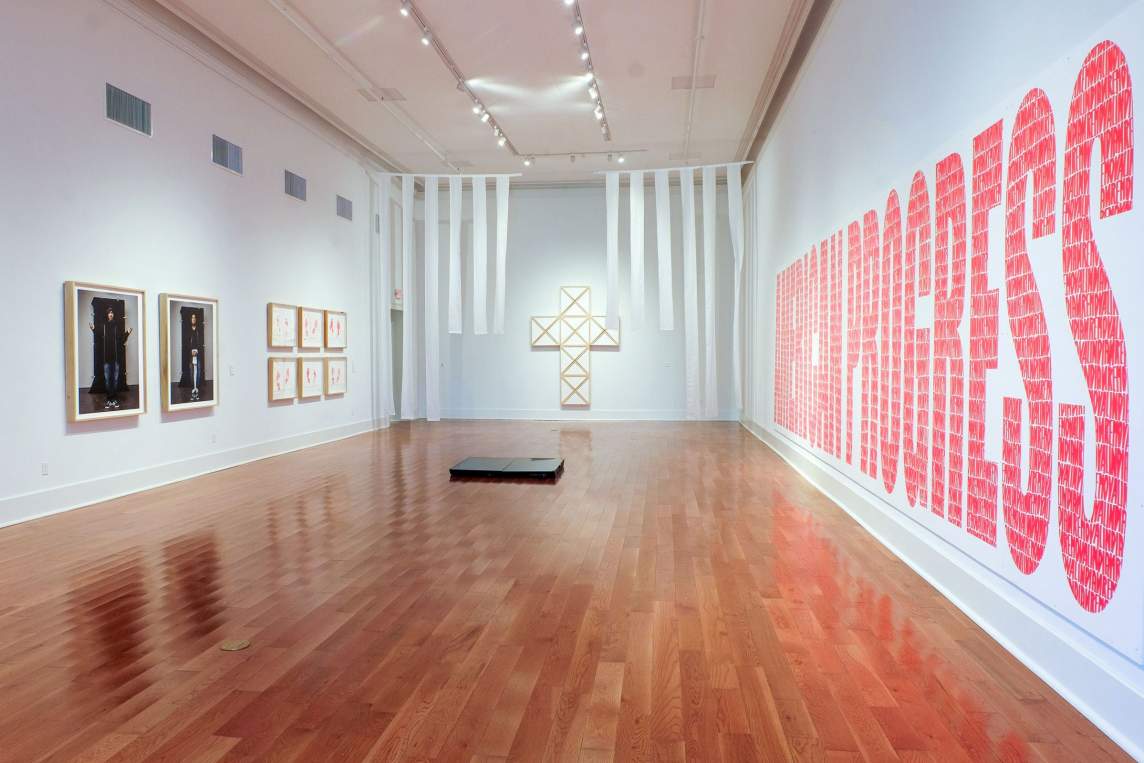
I’m motivated by the need to tell stories that have been erased or overlooked—stories of resilience, loss, and survival. My work is a way to process history and create space for reflection, not just for myself but for those who engage with it. I’m also driven by the responsibility to honor the generations that came before me and to contribute to the ongoing conversation about Native identity, representation, and justice. My practice is about making visible what has been intentionally obscured and ensuring that these narratives continue to be seen and heard.
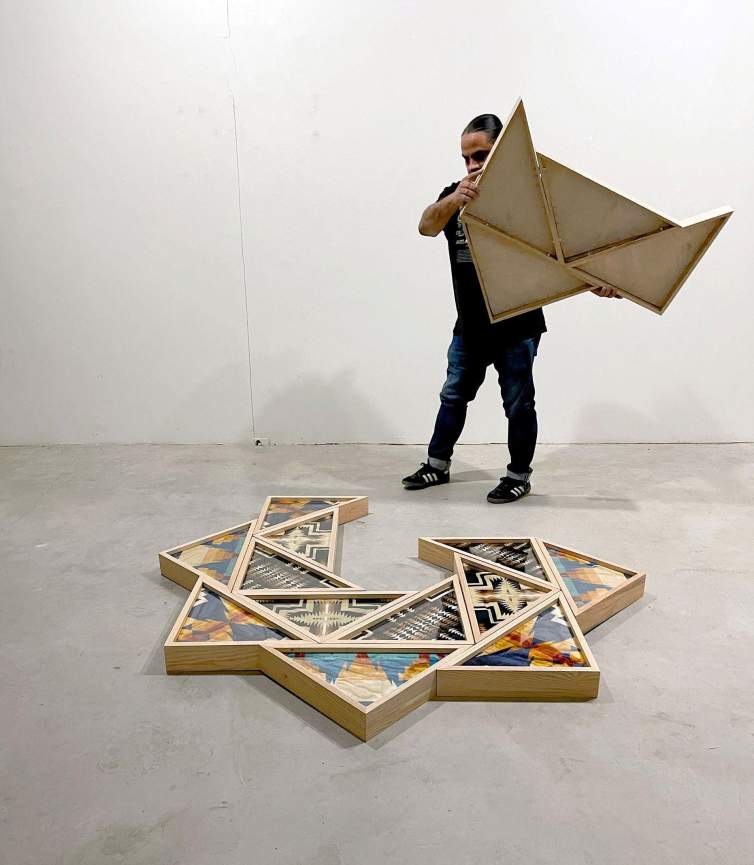
As a conceptual artist, my process is fluid. Sometimes it starts with an idea I’ve been holding onto for years, and other times, a material itself sparks the direction of the work. I keep notes on ideas, and they come to life as larger projects are realized, sometimes long after they first emerge.
For example, when I was on residency at the Vermont Studio Center, I visited the Johnson Woolen Mills and came across Pendleton beach towels. The idea of Native-inspired beach towels was absurd to me, so I bought them, knowing I’d eventually incorporate them into my work. Around the same time, I was thinking a lot about flag memorial cases, and these two ideas merged seamlessly.
That intersection between appropriation and how we venerate materials, objects, and symbols became a huge part of my installation work moving forward. So, while some projects start as fully formed concepts, others evolve through material exploration, with objects themselves leading me toward the final work.
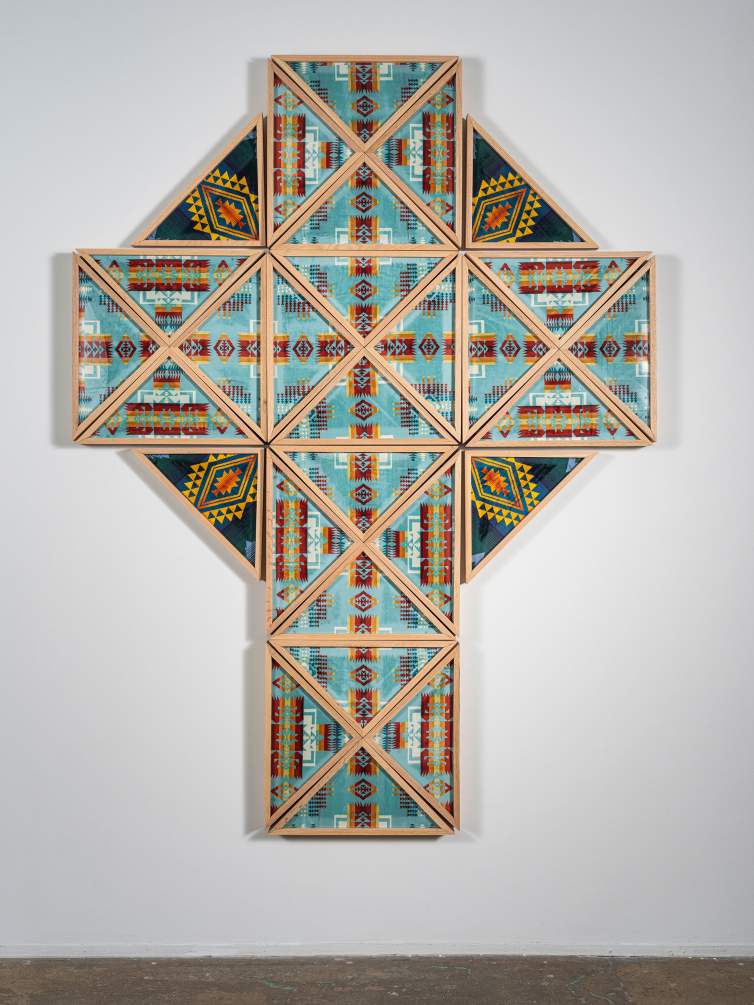
While I don’t have a dedicated studio, I’ve been fortunate to collaborate with local organizations that have provided the resources and space I have needed to realize projects within the last few years. Most recently, I was at the Bemis Center for Contemporary Art on residency, where I had access to a large studio space as well as other areas within the building. These opportunities have carried me along as I work towards building my own studio.
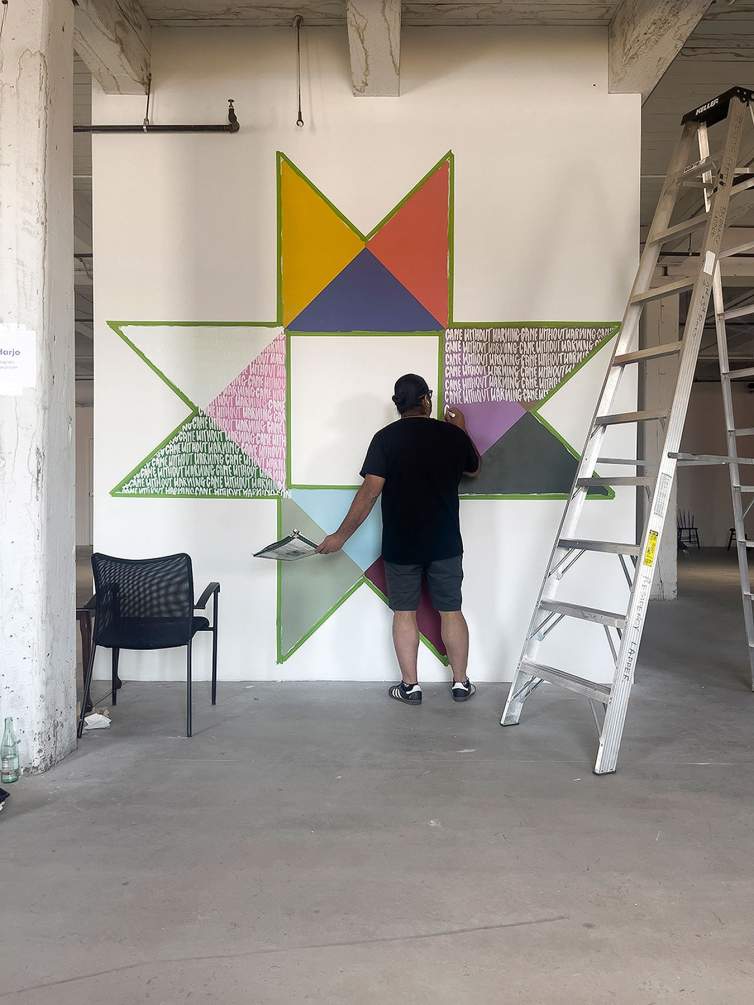
Came Without Warning is an installation I created during my time at the Bemis Center in the summer of 2024. The title alludes to a lyric by Nick Drake, but in this context, it speaks to the violent reality of Native people being forcibly removed from their lands, in some cases without any warning, leaving tribal communities devastated, displaced, and subjected to attempted genocide.
The piece features a sunburst mural painted in vivid, layered colors that radiate outward. Within the patterns, I’ve repeatedly written the phrase “came without warning,” like writing lines as punishment, a reference to Native boarding schools where students were forced to write sentences over and over as a form of discipline. The repetition becomes a way of processing loss, of confronting how knowledge and language were used against us.
By inscribing the phrase again and again, I’m both reclaiming the words and pushing back against the erasure embedded in history. Came Without Warning is a reminder that we were given no chance to prepare, and the weight of that sudden violence still resonates through generations.
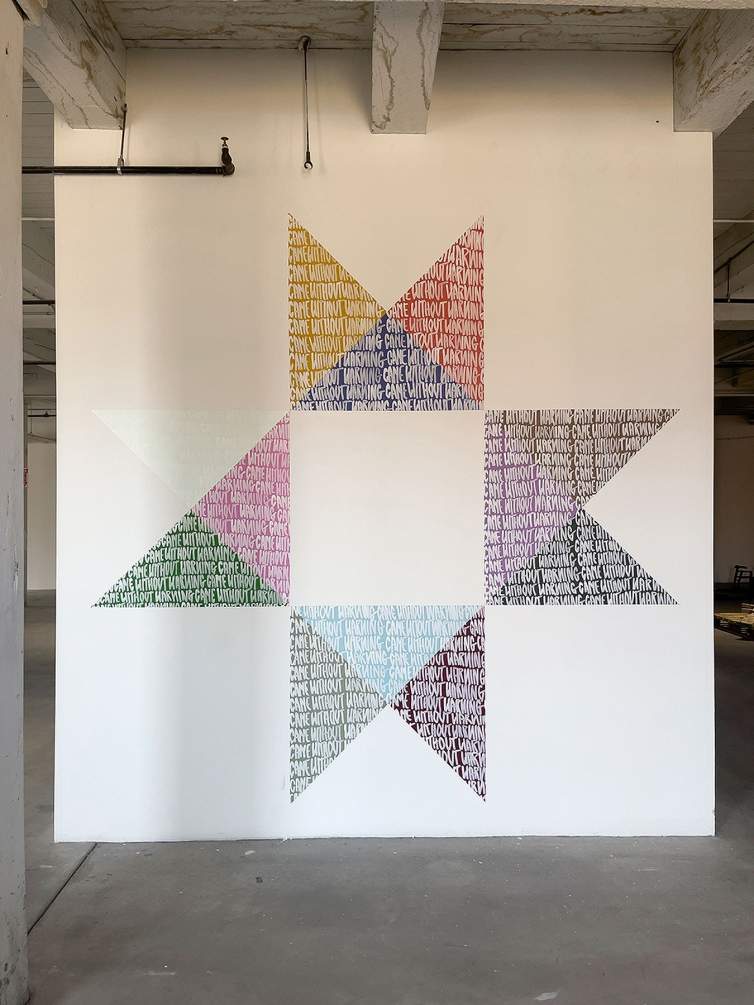
Right now, I’m creating work for Indian Removal Act III: We Are a Wounding. This project continues my exploration of history, memory, and the ongoing impact of forced displacement on Native communities. I’m also looking forward to future collaborations that allow me to expand my practice in new ways, whether through community partnerships or experimental installations.
I’m working on my first catalogue, which will document the Indian Removal Act series in detail. This publication will serve as both an archive and an expansion of the work and will provide deeper context for the themes of displacement, resilience, and representation that run through the series. It’s an opportunity to reflect on how the work has evolved over time and to create a lasting record of these installations and the histories they engage with. It’s also getting me to see how a catalogue or artist book functions so differently than an exhibition. It’s a welcomed new process.
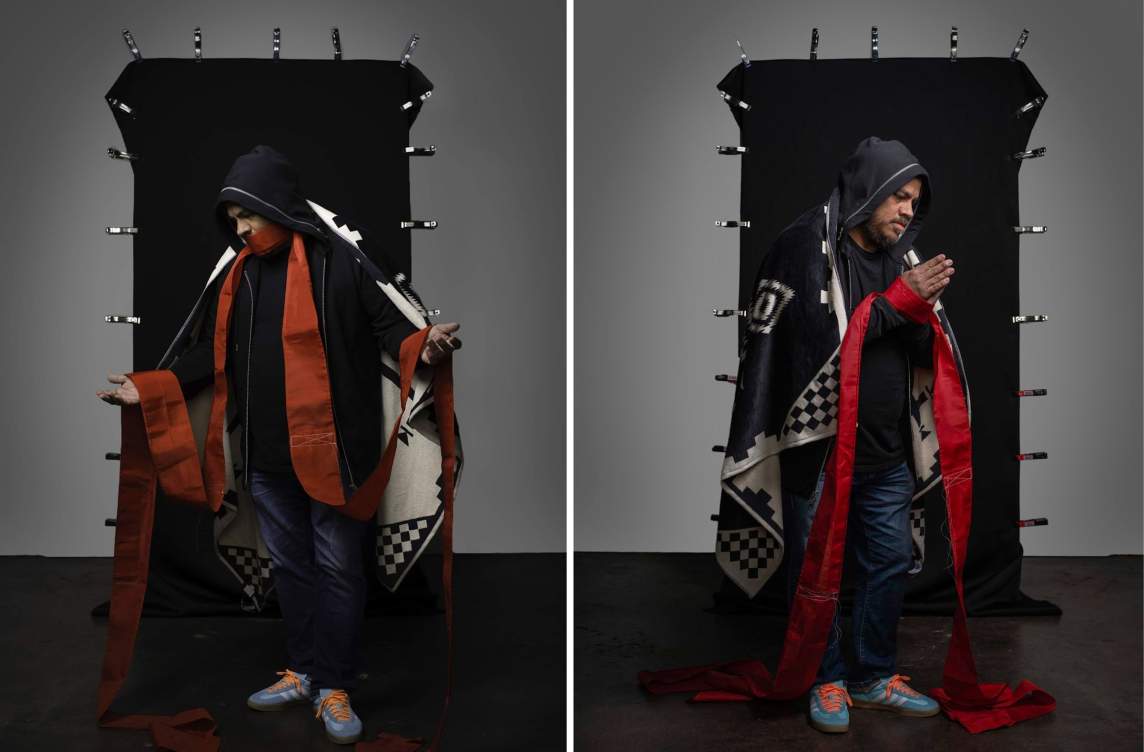
My work is meant to hold space for reflection on memory, loss, and resilience, particularly in relation to Native identity and the erasure caused by colonization and forced assimilation. I want viewers to feel the weight of these histories while also seeing the strength and persistence of Native presence. The installations create an exchange where people engage not just with the work itself, but with their own place within these narratives. I hope people experience a moment of recognition, whether that’s an emotional connection, a deeper understanding of history, or a shift in perspective.
Interview and editing by Jenny Gill. Learn more about Joe Harjo’s work at joeharjo.com.